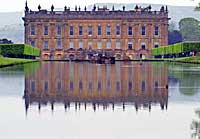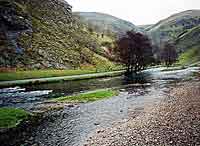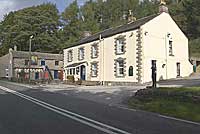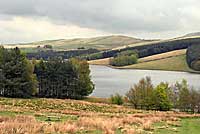The Peak District is situated at the southern end of the Pennines in Central England covering most of northern Derbyshire as well as parts of Cheshire, Yorkshire and Staffordshire. The Peak District National Park , designated in 1951 and covering 555 square miles, was the first of a series of National Parks in the British Isles. Buxton in Derbyshire and other built up and industrial are not included within the park boundaries. Over 22 million day
visits are made to the Peak District National Park every year,
making it the second-most visited National Park in the world.
The Peak District is split into the gritstone northern Dark Peak, where most of the high moorland is found and the southern mainly limestone-based White Peak, where most of the population lives. Much of the park is run by the High Peak, South Peak and Longshaw trust estates. About 12% is owned by the National Trust with the Peak District National Park Authority directly owning around 5%.
Woodland forms around 8% of the Peak National Park with Natural broadleaved woodland found in the steep-sided, narrow dales of the White Peak and the deep cloughs of the Dark Peak, while reservoir margins often have coniferous plantations.
The gritstone and shale of the Dark Peak supports heather moorland and blanket bog environments, with rough sheep pasture and grouse shooting being the main land uses. The limestone plateaus of the White Peak are more intensively farmed, with mainly dairy usage of improved pastures.

Chatsworth House |

Dovedale |

Edale Vale |

Snake Inn near Glossop |

Goyt Valley |
Tourism is the major local employment for Park residents (24%), with manufacturing industries (19%) and quarrying (12%) also being important. Limestone is the most important mineral quarried, mainly for roads and cement. Only 12% are employed in agriculture. The cement works at Hope is the largest employer within the Park. The springs at Buxton and Ashbourne are exploited to produce bottled mineral water, and many of the plantations are managed for timber.
Large reservoirs such as Ladybower, Derwent and Howden were built from the late 19th century onward to supply the growing urban areas surrounding the Peak District, often flooding large areas of farmland and depopulating the surrounding land in an attempt to improve the water purity.
The towns and villages are often quite isolated and built of the
abundant native stone. Here also, there are many more stone built
reminders of the ancient past, including the many burial mounds or
`lows` which crown so many hills in Derbyshire. Prehistoric
monuments also remain such as the magnificent Arbor Low stone circle
and henge near Parsley Hay and the Nine Ladies stone circle on
Stanton Moor.
The Peak District provides opportunities for many types of outdoor activity. An extensive network of public footpaths and numerous long-distance trails (over 3000 km in total), as well as large open-access areas, are available for hillwalking and hiking. Bridleways are commonly used by mountain bikers, as well as horse riders. Some of the long-distance trails, such as the Tissington Trail, re-use former railway lines; they are much used by walkers, horse riders and cyclists. The Park authorities run cycle hire centres at Ashbourne, Parsley Hay and Ladybower Reservoir. Wheelchair access is possible at several places on the former railway trails, and cycle hire centres offer vehicles adapted to wheelchair users. There is a programme to make footpaths more accessible to less-agile walkers by replacing climbing stiles with walkers' gates.
The many gritstone outcrops, such as Stanage and the Roaches, are recognised as some of the finest rock climbing sites in the world. The Peak limestone also provides many testing climbs. Some of the area's large reservoirs (for example, Carsington Water) have become centres for water sports, including sailing, fishing and canoeing, in this most landlocked and beautiful part of the UK.
Over the years the Peak District has been immortalized on film in numerous movies and TV dramas. BBC's Pride and Prejudice, Jane Eyre and Frank Zeffirelli's Jane Ayre having an immense impact on the area, with visitors coming from far and wide to see locations used during filming.
see Jane Eyre also Pride & Prejudice for film locations within the region.
More informatiom
Derbyshire and Peak District towns and villages
About Derbyshire
Country houses in the Peak District
Dales in the White Peak
Accommodation in the Peak District